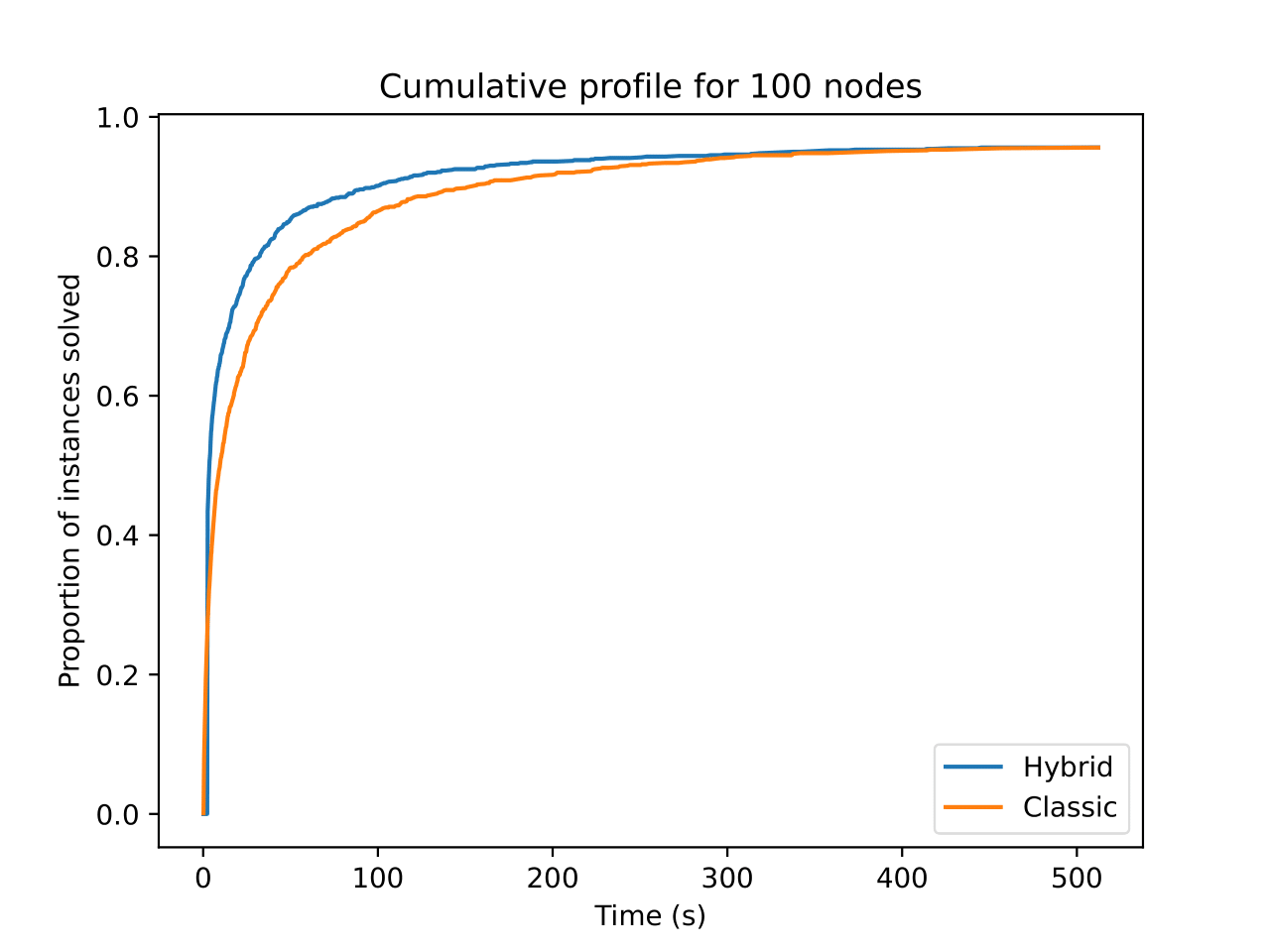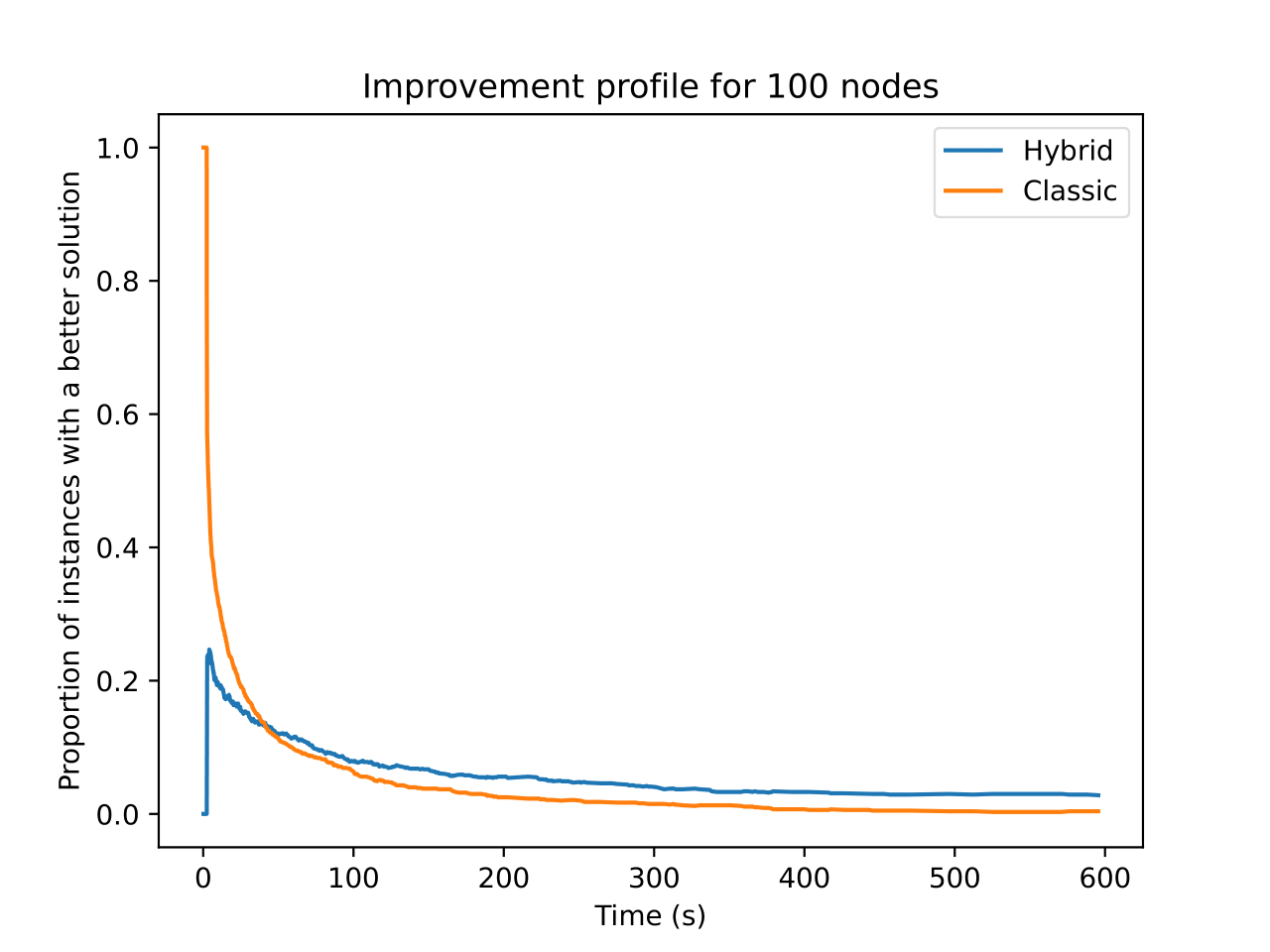This repository contains the implementation of the Graph Convolutional Branch and Bound solver for the Traveling Salesman Problem described in the Graph Convolutional Branch and Bound paper . It combines a 1Tree branch and bound proposed by Held and Karp with the Graph Convolutional Network proposed by Joshi, Laurent, and Bresson. In the src folder, you can also find a Cplex TSP solver that I developed to verify the correctness of the hybrid one.
The Graph Conv Net is used to preprocess the input Graph to create a distance matrix file. Each entry in this file will be a pair
To improve efficiency, the original 1-Tree Branch and Bound approach proposed by Held and Karp was not implemented. Instead, a modified version, well described in the Valenzuela and Jones paper, was used.
I used the pre-trained Graph Conv Nets that Joshi released in the official repository of the paper. These networks were trained on one million instances of Euclidean TSP, with cities sampled from the range
The hybrid solver obtains the probabilities for each Edge of being in the solution using a Graph Conv Net, it then assigns to a 1-Tree the probability of being the optimal tour by averaging the probabilities of its edges. It then uses these values as follows:
- Starting vertex: to construct a 1Tree, and so solving the relaxed version of the TSP a starting vertex must be chosen. The algorithm tries all verticies and then select the one that yields the best lower bound. If multiple verticies produce the same lower bound, the one with the highest probability is chosen;
- Probabilistic nearest neighbor: the algorithms needs an initial feasible solution. In the classical solver, this is accomplished by executing the nearest neighbor algorithm with each vertex as the starting city and then selecting the lowest tour found as the initial tour. The hybrid solver also uses a prob-nearest-neighbor algorithm. Starting from each city, it selects at every step the unvisited city that is linked to the current one by the edge with the highest probability. The tour found with this algorithm is then compared with the one returned by the nearest neighbor, and the best one is used as the initial feasible solution;
- Node Selection: all subproblems generated by the branching steps are stored and sorted from lowest to highest. In the Hybrid Solver when two subproblems have the same value, the one with the highest probability is selected first in a Best-First-Prob manner. This procedure is extremely flexible, as it provides meta-parameters that allow for the modification of the subproblems sorting criterion, enabling any desired trade-off between the probability and the value of 1Trees.
- Variable Selection: hen a 1Tree is not a correct tour but provides a lower bound on the current best solution found, a branching step must be taken. The selection of the edge to be fixed as mandatory or forbidden in the new branch and bound nodes is accomplished by integrating the Shutler's method with the edge probabilities.
All code documentation was completed using Doxygen, and is accessible in both online and PDF formats.
Below are some of the results obtained:
| Cumulative Profiles | Performance Profiles |
|---|---|
 |
 |